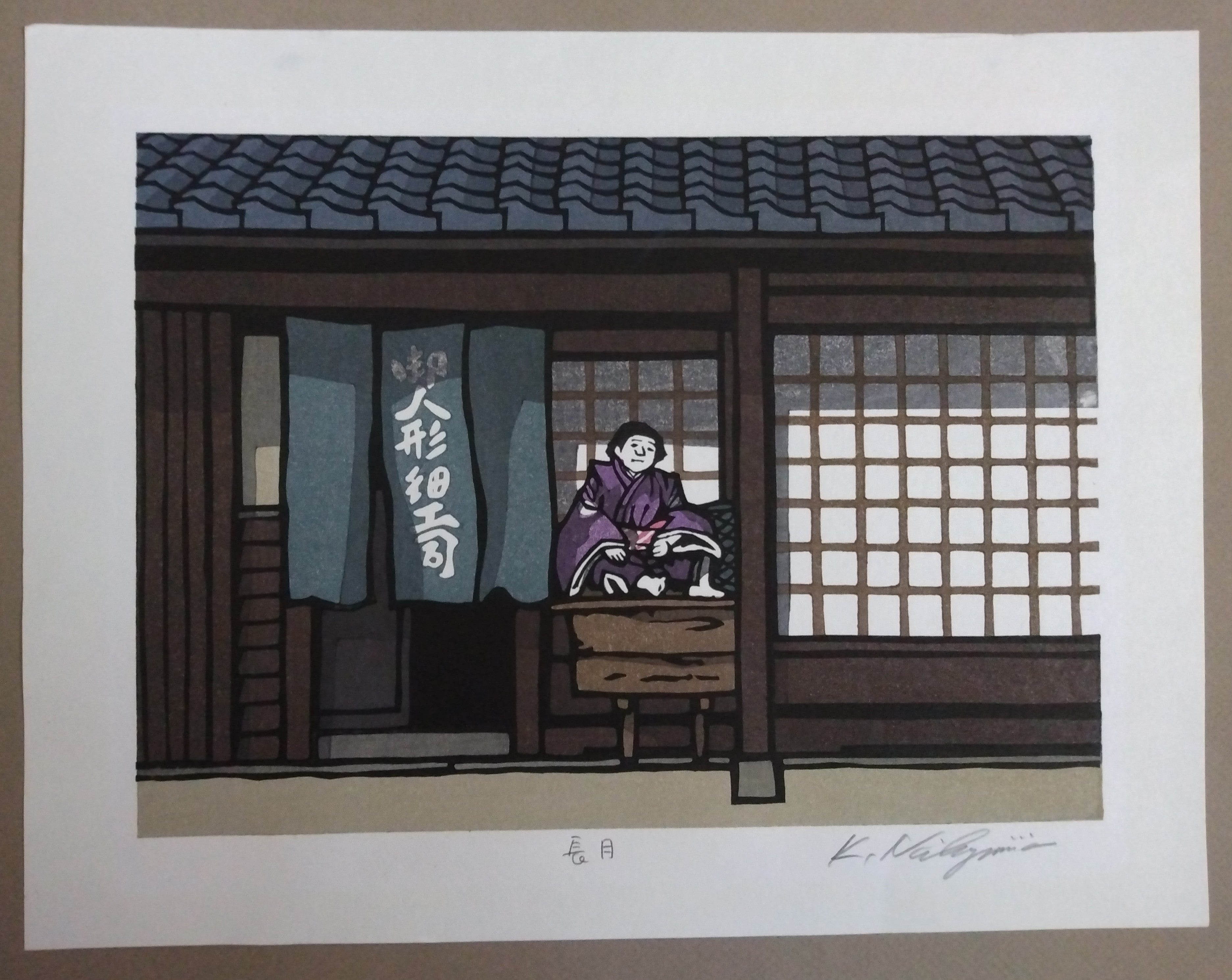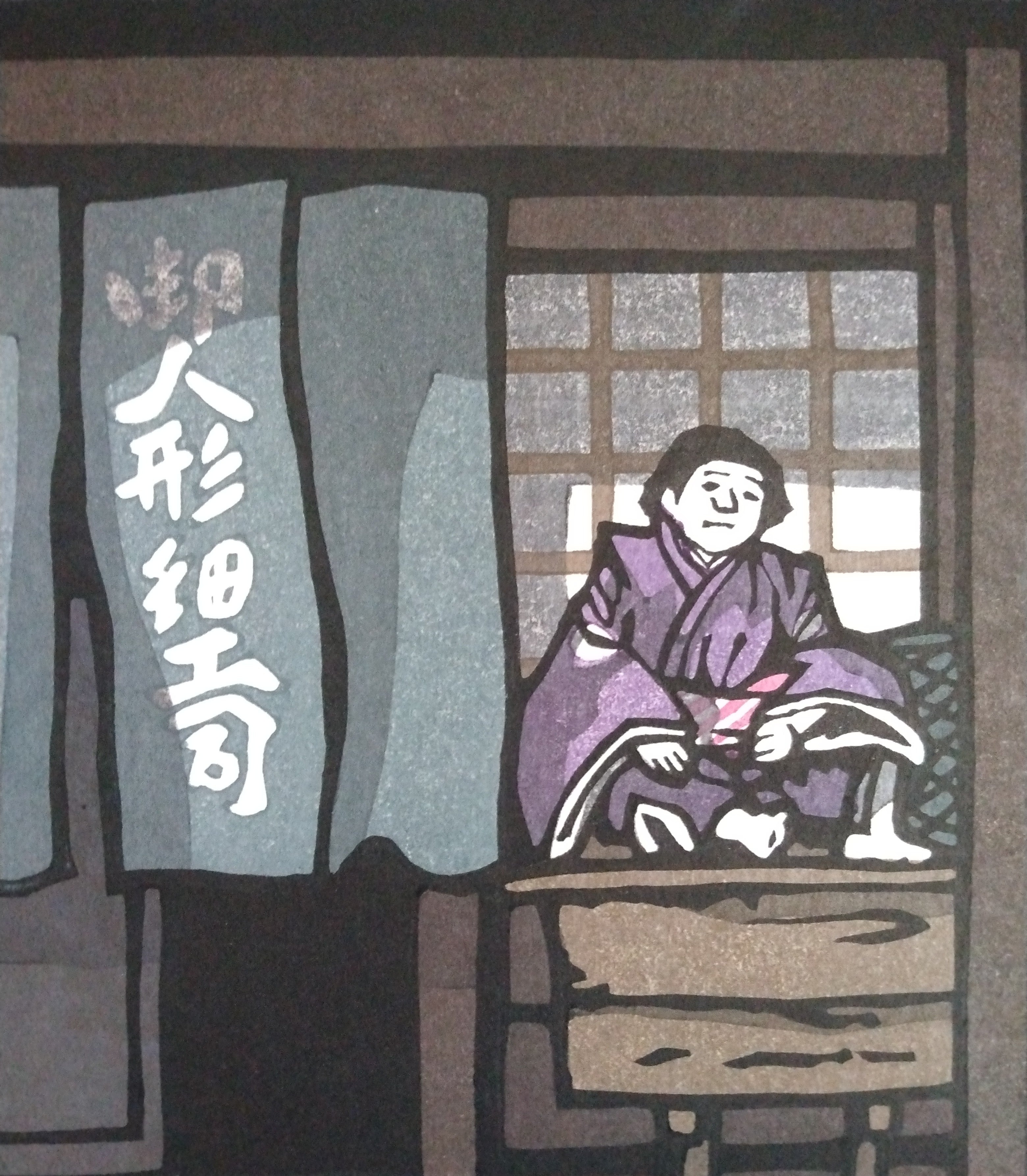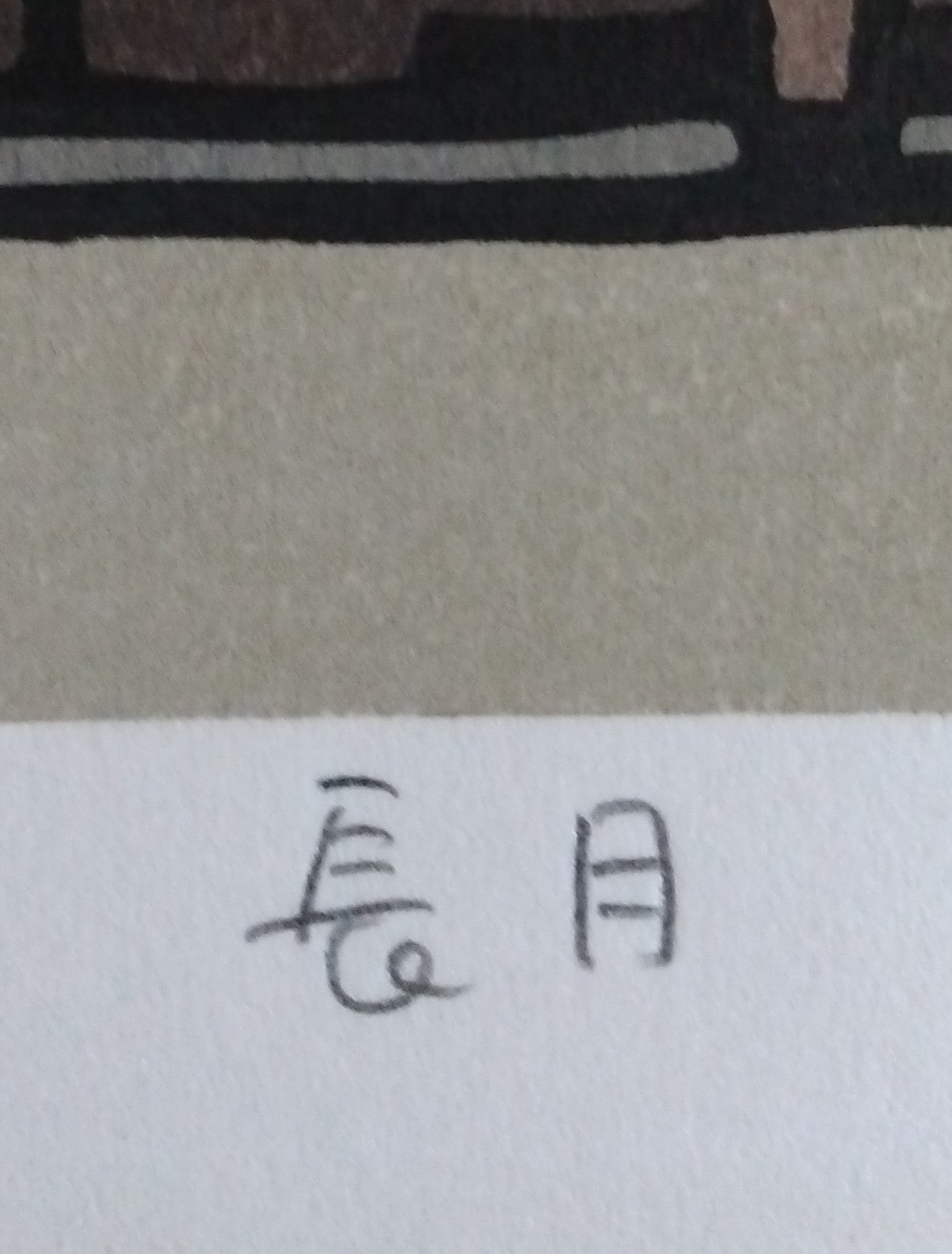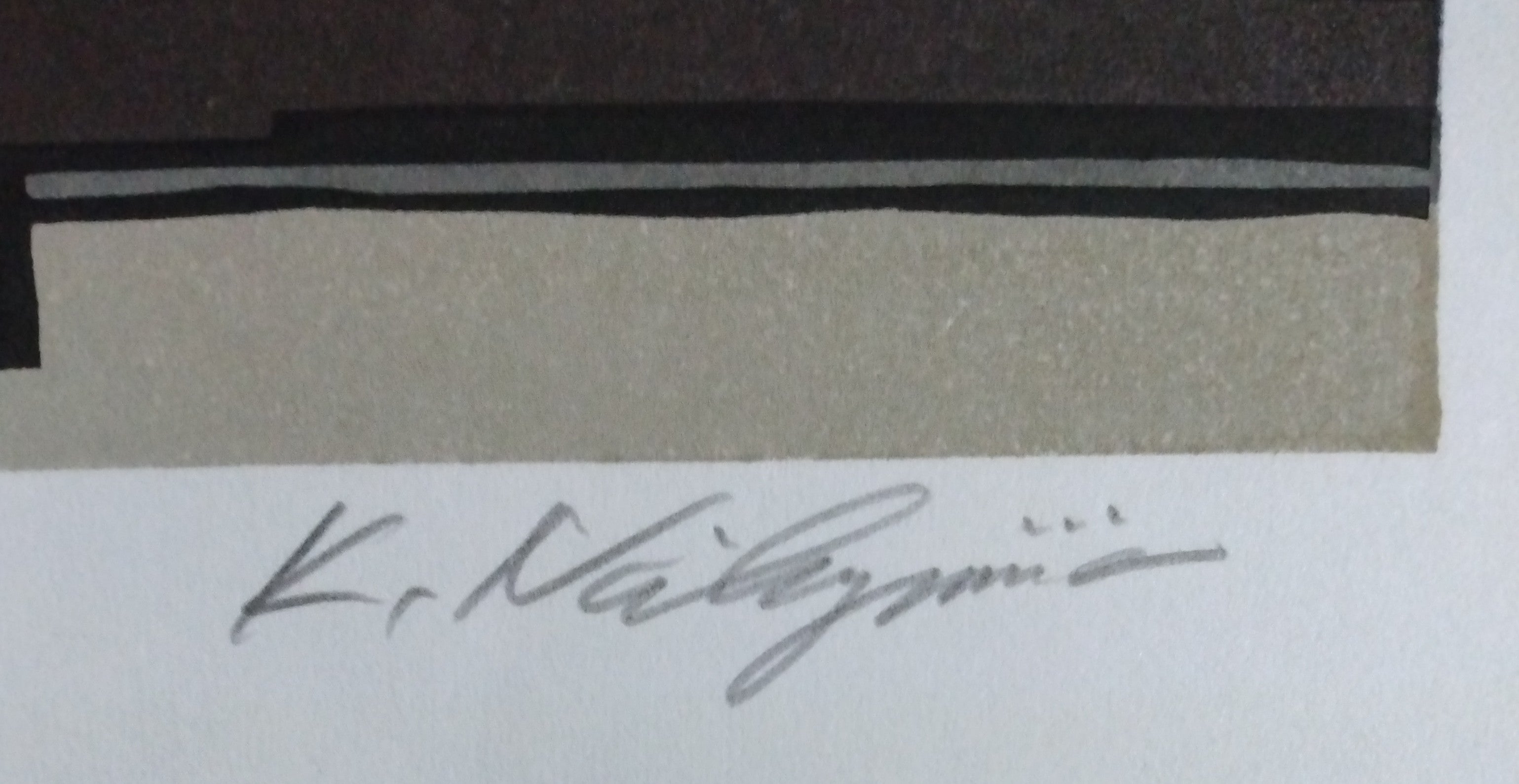Description
Woodblock Print by Katsuyuki Nishijima, "Nagatsuki" (Long Month, September). Artist signed print. Ca. 1980's. Horizontal format; H. 7.5"(19cm) X W. 10.5"(26.75cm). Excellent condition.
The image is called Nagatsuki, which means "Long Month" and refers to the month of September, or "The Month with Long Nights" in the old Japanese calendar. The subject is the Shijo Street Doll Shop of Ito Hisashige XII, a renowned Kyoto doll maker whose family's Goshou Ningyo were presented to the Imperial Court for several generations. The doll is the shop's symbol, or mascot, the Kusakari Doji (Herb Cutting Boy) which was said to have helped alleviate a small pox epidemic in the late 1700's. The efficacy of the doll's affect on the disease was what led to the family bestowed the Ito Hisashige name by the Imperial Court in 1767. Since then, the Ito Hisashige lineage, now in the 12th generation and the 13th in training, has received Imperial recognition and has pieces in Imperial household and museum collections around Japan.
Katsuyuki Nishijima, 1945 – present.
Katsuyuki Nishijima was born in Yamaguchi Prefecture at the southwest end of the main island of Honshu. At the age of 19, he started studying the art of woodblock printing making at the Mikumo Publishing Company in Kyoto. By the early 1970’s, he was beginning his career as a Sosaku Hanga (Creative Print) artist. As opposed to traditional woodblock prints of the 19th Century and earlier that were created by a team of artisans composed of designers, carvers, colorists, printers, and publishers; the Sosaku Hanga movement of the 20th Century highlighted the work of artists who self-drew, self-carved, and self-printed their own expressive works. Nishijima is a very popular contemporary Kyoto print artist and his works have been collected and exhibited widely in Japan, the US, and Europe.
Nishijima’s works could be called “romantic” in that there is something idealized and old-fashioned about his images. They rarely contain people; or modern elements such as cars, telephone wires, or even the ubiquitous Japanese trains. They focus on architectural elements such as tiled and thatched rooftops, verandas, noren shop curtains, the wooden latticework in front of Kyoto machiya buildings, stone walls, as well as Japanese rural landscapes. While these could be considered romantic and detached from reality, these elements still exist in modern-day Japan and are what visitors are drawn to and remember in places like Kyoto, Shigaraki, Takayama, and the like. One could say that instead of romanticizing Japanese scenery, he’s actually bringing out the essence of what is beautiful and important in humanity’s view of traditional Japan.






